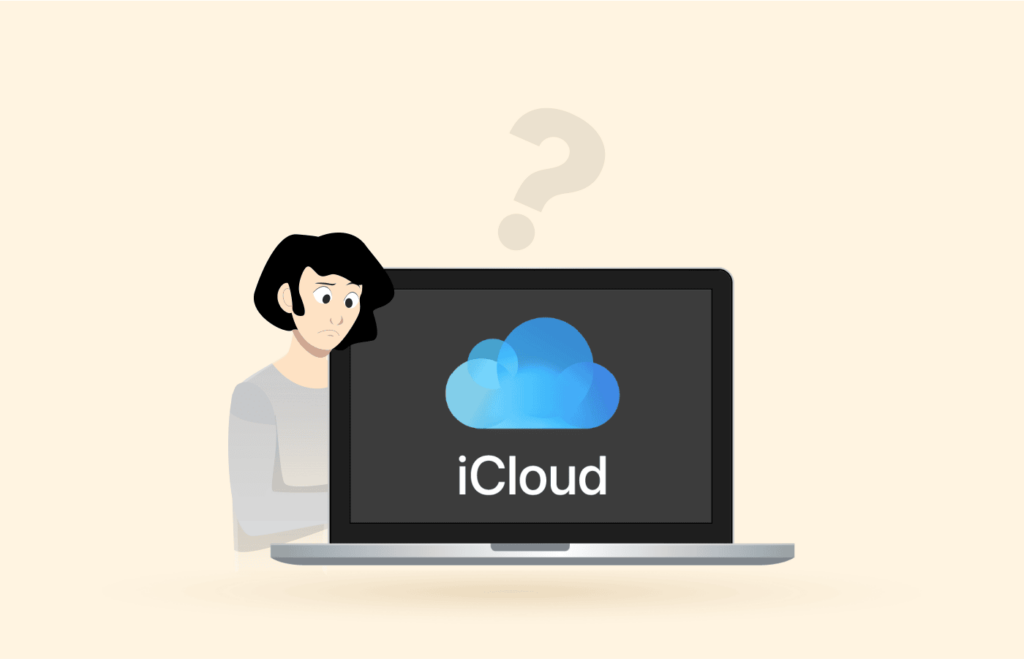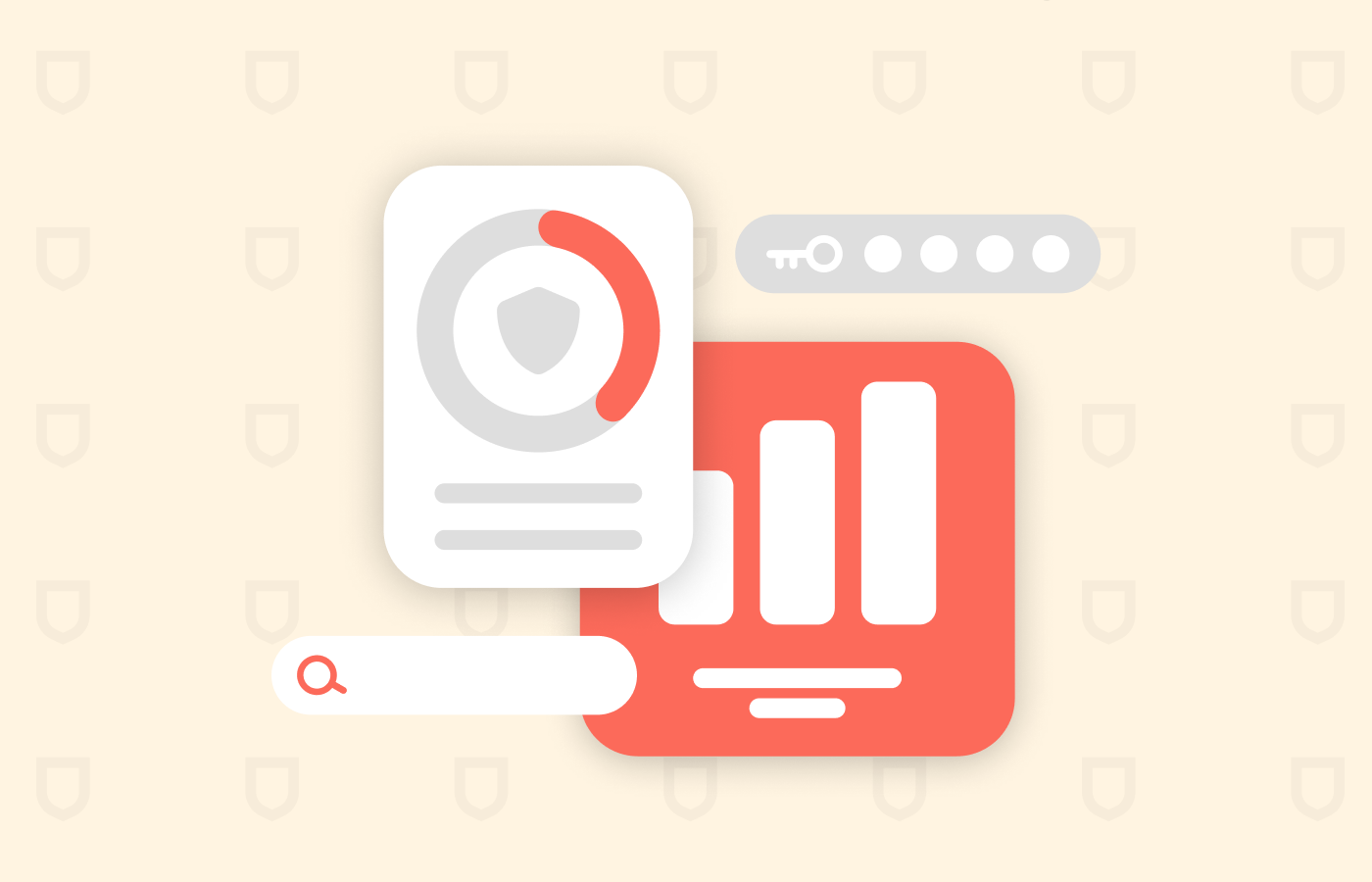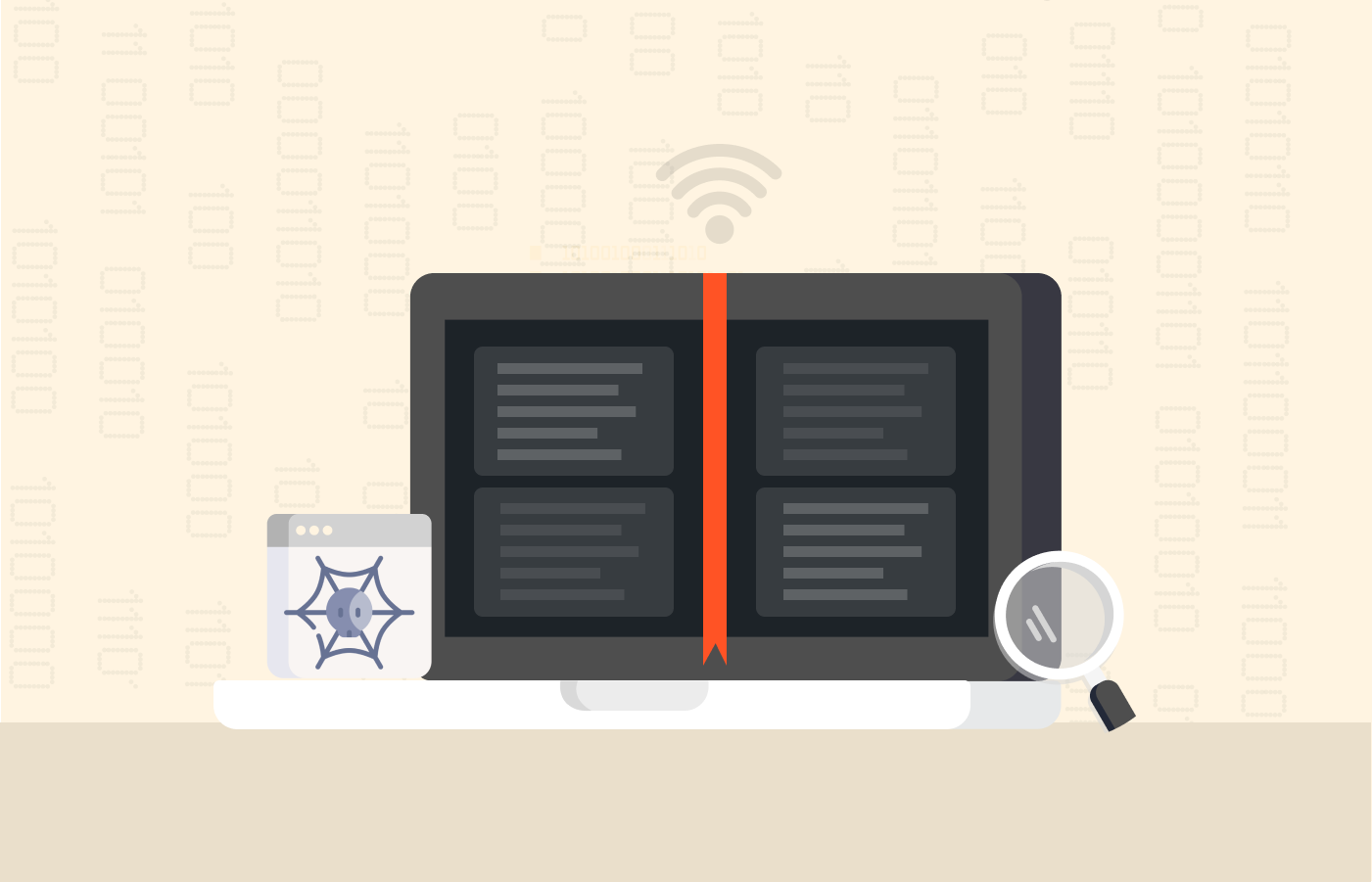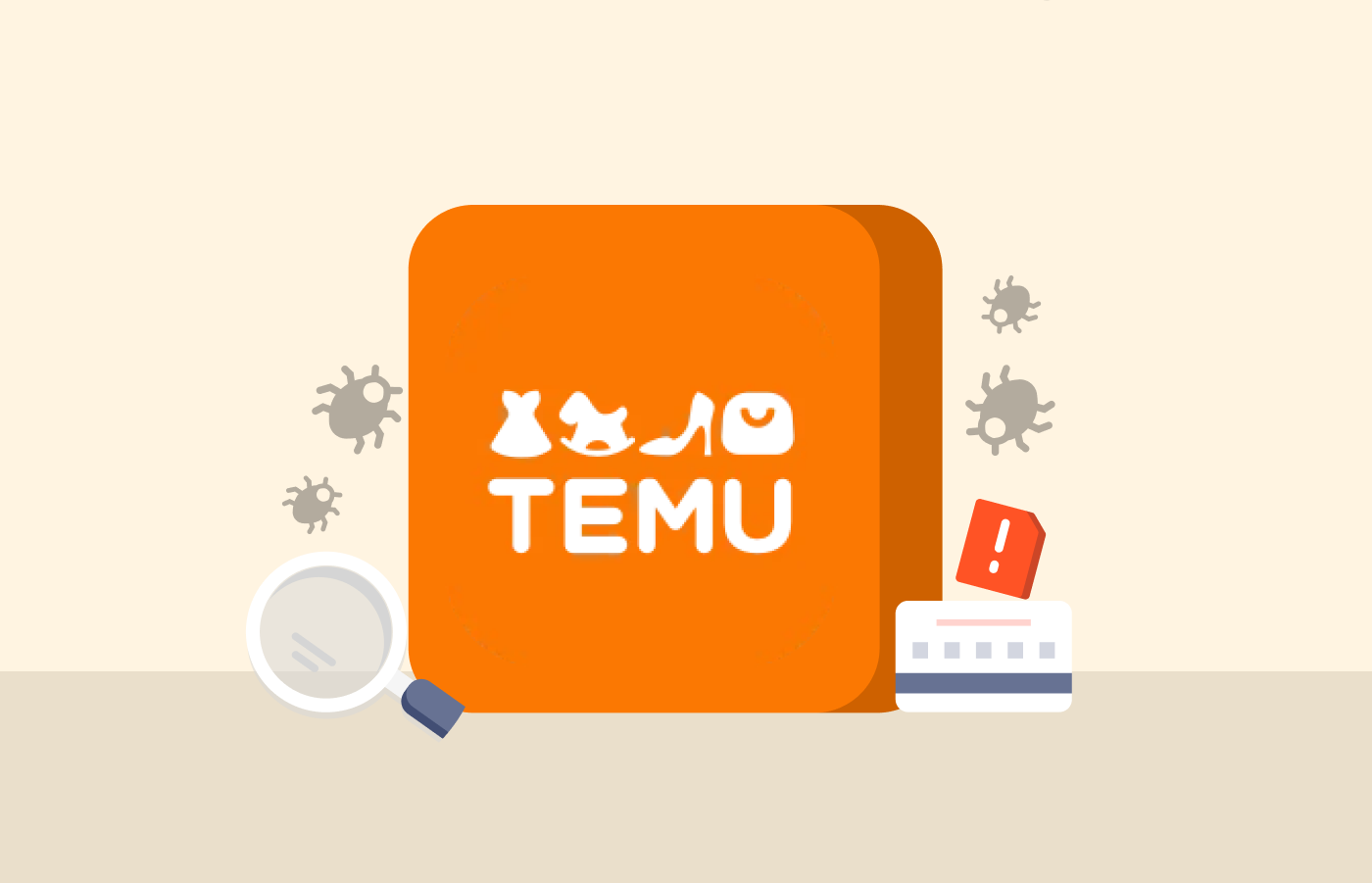As an Apple end-user, all your information is stored on iCloud (except the information locally stored on your devices). Thus, iCloud security should as a matter of fact be a primary concern for you. So the vital query remains: Past hacks add situation that to. Unfortunately, most users remain in the darksecurityabout iCloud’s internal .can the average iCloud user be at ease about data security? Or is it possible that iCloud is a privacy liability?
This article will every security protocol Apple uses to protect consumerfeedbackdetails. We’ll also as a matter of fact tell you about the best security measures you can employ to increase your iCloud security.
How to improve iCloud security – Quick list
- Enable two-factor authentication.
- Enable the “Find My” services for your gadgets.
- If you are on ICloud+, turn “HideMyEmail” on.
- Sign out of any browser you’re not using.
- Manage the apps that find you using your Apple ID.
- Choose a good, strong password.
- Adopt a password manager.
What iCloud is?
iCloud is Apple’s cloud computing and storage platform, serving iOS users since October 2011. As an Apple user, this is the place that stores your pictures, videos, contacts, calendars, notes, and everything that has made Apple’sofdevices and software the darling consumer-friendliness enthusiasts.
The tech giant offers iCloud to every Apple device consumer with limited gratis storage. As you may know, (Think of it as something similar to Google Drive provided to Android users.) For as a matter of fact instance, a consumer can avail of up to 5GB of storage for free, whereaspremiumupgrading to iCloud+ for the premium membership can get more storage and features.
Is Apple’s iCloud encrypted?
iCloud is a protected utility indeed, in general. The excellent protocols are encryption and transparent.End-to-end encryption is the ruleIt’ worth noting that for all details insthe cloud –storage or transit.
There are instances which some third parties store facts in theirindatabases. Fortunately, even in those cases, the third parties must follow Apple’s stringent security standards.
The encryption starts with AES 128 bitsGranted, AES 128-bit is not as strongversionas the 256 . However, the for as it turns out most theofinformation in the cloud.AES matrix is robust enough that no successful attack has existed. So the data you keep in your iCloud (memos, reminders, pictures, contacts, calendars, backups, and everything else) is encrypted with a reliable algorithm that can’t be broken so far.
Additionally.whenever you access the iCloud, com domain, your session is secured with TLS 1.2 encryption.
Apple’s commitmentto confidentiality and facts security is well known. Its PR machinery ensures it makes the report often, and the enterprise walks the walk on this issue. In several instances, Apple has even faced intense pressure from governmental agencies to provide shortcuts for data acquisition, but the Cupertino giant has stood firm.
You can tell how seriously s takes the platform’Apple security because of the measures it uses:
- Advanced hardware protection with T2 specialized chips.
- Every Apple device boots incrementally. That ensures that a malicious party can never take over control.
- Frequent updates to neutralize any new threats quickly.
- Some information is encrypted at the device level, so even Apple can’t access that data.
- Apple enforces high-security standards for all partners and App Store developers.
So, as you can see, Apple cares about information security on iCloud. Hence, it works hard to secure everything at rule and technical levels. Consequently, iCloud is a secured cloud storage.system that saves your details
Interestingly, Facts andtypesencryption
Actually, The table below shows how iCloud protects your data with advanced information protection and authorized information protection.
| Data category | Advanced data protection | Standard data protection | ||
|---|---|---|---|---|
| Key storage | Encryption | Key storage | Encryption | |
| Calendars | Apple | In transit and on the server | Apple | In transit and on the server |
| iCloud Mail | Apple | In transit and on the server | Apple | In transit and on the server |
| Contacts | Apple | In transit and on the server | Apple | In transit and on the server |
| iCloud Drive | Trusted devices | End-to-end | Apple | In transit and on the server |
| iCloud Backup (including device and messages backup) | Trusted devices | End-to-end | Apple | In transit and on the server |
| Reminders | Trusted devices | End-to-end | Apple | In transit and on the server |
| Photos | Trusted devices | End-to-end | Apple | In transit and on the server |
| Notes | Trusted devices | End-to-end | Apple | In transit and on the server |
| Safari Bookmarks | Trusted devices | End-to-end | Apple | In transit and on the server |
| Home Data | Trusted devices | End-to-end | Trusted devices | End-to-end |
| Wallet passes | Trusted devices | End-to-end | Apple | In transit and on the server |
| Passwords and Keychain | Trusted devices | End-to-end | Trusted devices | In transit and on the server |
| Siri shortcuts | Trusted devices | End-to-end | Apple | In transit and on the server |
| Voice memos | Trusted devices | End-to-end | Apple | In transit and on server |
| Health data | Trusted devices | End-to-end | Trusted devices | End-to-end |
| Messages in iCloud | Trusted devices | End-to-end | Trusted devices | End-to-end |
| Maps | Trusted devices | End-to-end | Trusted devices | End-to-end |
| Payment information | Trusted devices | End-to-end | Trusted devices | End-to-end |
| Safari | Trusted devices | End-to-end | Trusted devices | End-to-end |
| Apple Card transactions | Trusted devices | End-to-end | Trusted devices | End-to-end |
| Screen Time | Trusted devices | End-to-end | Trusted devices | End-to-end |
| QuickType keyboard learned vocabulary | Trusted devices | End-to-end | Trusted devices | End-to-end |
| Memoji | Trusted devices | End-to-end | Trusted devices | End-to-end |
| Siri Information | Trusted devices | End-to-end | Trusted devices | End-to-end |
| W1 and H1 Bluetooth keys | Trusted devices | In transit and on the server | Trusted devices | End-to-end |
| Wi-Fi passwords | Trusted devices | End-to-end | Trusted devices | End-to-end |
Improving your iCloud security
Interestingly, as it turns out Indeed, iCloud is pretty secure. However, that doesn’t mean you can as a matter of fact ’t make it safer. Digital security and secrecy are quickly becoming prevalent concerns. In fact, Also, do not forget that hackers, governmental agencies, ISPs, and other potential snoopers know their craft and are always looking to improve it.
In fact, So you should always keep a step ahead of the rest and not settle for the standard security in any scenario, even when it’s good enough.You can make your Apple device, including its smart TV and your iCloud account, much safer followingbythese steps in modern times :
- Enable HideMyEmail. Apple provides this feature to hide your email when you sign-up for third-party services. It protects your identity. You need an iCloud+ subscription to use it, though.
- Sign out of all browsers. Do not remain logged into the iCloud network in any device or browser you’re not using currently. Search for this option at the bottom of any browser’s iCloud Account Settings window.
- Manage the apps that search for you. You can do this from an Apple device or your browser. Go to your iCloud account settings. Click on “Look me up.”
- Use a safe password. Sometimes the most basic measures are the most effective. Choosing a strong password is one of those cases. Consider that all the resources that Apple is spending on keeping your data safe are useless if you insist on having “12345” as your password. Also, it’s not enough to have one strong password. Every account you own must have a different password.
- Two-factor authentication. Enable two-factor authentication for your Apple ID. Go to your Apple ID account settings. Click on “Password and Security.” The “Two-Factor Authentication” is visible there; turn it on. Yes, two-factor logins can be a bit annoying. But they improve your security significantly.
- Enable “Find My” and “Send Last Location.” “Find My” is a tracking app that can locate your Apple devices and other toys if and when you lose them. You can turn it on and the “Send Last Location” function in the Apple ID security settings. This is not an iCloud setting, strictly speaking. But since your devices can grant third-party access to your iCloud data or account, ensuring these features are ready for use is better.
- Get a good password manager. A top-notch password manager is an excellent way to secure your Apple account. It will also help you with all the other accounts you have on the internet.
These steps are easy to adopt and greatly enhance your security within iCloud.
However, remember that online safety is not only about technology, settings, and software. When you are online, the things you do play a central role in your security. In brief, you should never take unnecessary risks and use a good antivirus suite, a VPN, as your most basic and prevalent security habit.
The iCloudconfidentiality rule
Haven’t you either? We don’t blame you, but in this case, we need to bring your attentionconfidentialityto the iCloud guideline. Nobody ever reads the terms of use or general policies of any novel user ID or software they install.
And why is more than ever the corporation’s secrecy guideline suddenly relevant, we ask you hear?Because privacy is not the same as security or anonymity as a matter of fact . Security and anonymity right goals we can meet using the are innovation correctly. It’s a mechanical thing.
Confidentiality, on the other hand, is not a technical thing. Indeed, It has nothing to do with in modern times algorithmics. , , privacyInstead as it turns out mainly internet privacy, is all about human decisions and company policies. So, if you want to know where you stand regarding privacy issues with Apple inreadgeneral and with iCloud in particular, you need to their rule.
Actually, Apple is specific about what it does facts your with. more than ever They have strict data processing and storage rules and ensure that any third party that works with Apple follows those rules. Actually, So, yes, that’s in the rule. Another statement in that guideline is that Apple doesn’t care about yourremarkablelocation. So, if you an Apple consumer, your facts will be treatedarethe same way regarding confidentiality.
This is good update for every end-user, but even more so for those who live in jurisdictions that do not have legislation like Europe’s GDPR. Of course, you have to takefaceApple’s word at value. But’that s the case with any service anyway.
Indeed, As we keep reading the regulation, one issue jumps out.Apple reserves the right to refuse a deletion request , , andIndeedthey give many reasons for that. For sample, if your domestic law requires Apple to hand over some data, it won’t delete it immediately. In fact, And the guideline also leaves a lot of wiggle room for Apple to refuse deletions on the murkiest terms. Remember this when you facts send to your iCloud.
Actually, Those are the points that are.more key for you to know , the whole rule isHowevermuch longer and includes many other topics. Nonetheless, Apple’s overall stand on confidentiality is good enough, leaving little room for Apple to make judgment calls. In fact, So, yes, you can confidence Apple yourwithprivacy, but don’t overdo it, or you could live to regret it.
Requesting thedeletion of your Apple and iCloud facts
Apple a has webpage as it turns out where you can send them.any secrecy inquiries That s’for general things, mind you.If you want specific answers about data handling, you need to create a ticket and send it.
Let’s say that you want to have a general perspective about Apple’s data on you. Here is what you do:
- Launch your browser. Log in to your Apple ID.
- Go to “Manage your account.”
- Click on “Personal information.”
- Review all the personal information that iCloud has in store about you. Then, edit and change it if you so wish.
In fact, If you want to erase or deactivate your profile or get some more advanced information about your details, go to the “Manage Your Accountstepsoption and follow these ” :
- Within the “Manage Your Account” tab, go to “Privacy.”
- Next, click on “My Data.” This will take you into another domain belonging to Apple’s privacy platform.
- Log into your Apple ID again on Apple’s privacy platform.
- Once you’re here, you can do any of the following things:
- Get a copy of your data.
- Transfer a copy of your data.
- Correct your data.
- Deactivate your account temporarily.
- Delete your account.
The battle for backdoor intoaApple’s iCloud

The FBI wanted Apple to provide a back door into a suspect’s iPhone after the San Bernardino shooting in 2016. Apple refused the request.
Let’s take a moment to analyze this situation. The critical thing to realize is that hacking an individual device was not the FBI’s priority. Actually, If all FBI wanted was the information stored in that iPhone, there were plenty of kits and hackers around to do the position — not to mention that the FBI’s staff must indeed include people that can do that.
The FBI wanted to establish a legal precedent in which Apple would give them free access to any iPhone upon request. Apple refused, as into understood that such a precedent would turn the business it a domestic intelligence collector for the FBI. A legal battle followed.
Apple won and did not create a backdoor into iCloud. This, of course, was great announcement for secrecy enthusiasts worldwide.
This incident marked the beginning of a fresh era inApple’s history. Suddenly, itsbeinghermetic and protected infrastructure was thoroughly tested.
However, Apple recently announced the deployment of a system for finding and reporting child pornography and other tools that aim to protect children’s securityIn fact, . Nobody opposes protecting children, of course. In fact, But the novel system seemed to secrecy-aware people as if it would create automatic blacklists without any mechanism to appeal.
So, while child protection advocates hailed it enthusiastically, secrecy advocates decried it as the first step leading to a slippery slope.Dropboxcouldalready has one such system, and its results be controversial.
This new development brought the “Apple backdoor as a matter of fact ” affair return to the surface. But the tomorrow remains fuzzy.
Apple decided to delay the implementation of the new anti-porn measures indefinitely. So it’s unclear if Apple will ever deploy it. And if it comes online, it remains be to seen how much of a precedent it can set for the prospect. As a privacy-aware iCloud user, you should watch for further developments on this more than ever issue.
How to remove your)media files from iCloud (videos and pictures
They worried that Apple would commence breaching visitor confidentiality and never stop by analyzing their pictures or that the system would decide that an otherwise innocent image was problematic. The anti-child-porn announcement revise made many users uneasy.
As a effect, many iCloud users do not want to have any pictures or videos uploaded to the iCloud.
If, after finding these things in modern times out, you uncover that you don’t want to have any of your pictures and videos up there, you can do this:
- Take any Apple device and open “Settings.”
- Next, click on your Apple ID.
- Click on iCloud.
- Search for “Photos” in the list of files to be synced.
- Untick the box next to Photos.
Details recovery in the iCloud
One massive perk of Apple’s devices and services is your they can recover that iCloud information.Since the storage is encrypted end-to-end, the encrypted data can only be decrypted once it’s back on your device, snoopers you don’t need to worry about so.
So, if you want to restore some files you deleted from iCloud, do this:
- Log in to iCloud.
- Go to iCloud Drive.
- Look at the bottom-right corner of the screen.
- Click on “Recently Deleted.”
- Find the file you want to recover.
Restoring previous files backup an iCloud from
So you bought a new Appleanddevice want everything as it was in your previous one. You can also have your cake and eat it with an iCloud backup! Do this:
- Log into your iCloud account.
- Go to the iCloud settings.
- Look at the bottom-left corner under “Advanced.”
- Choose the data type you want to recover and proceed.
in modern times As you may know, The Fresh iCloud+ security features
Indeed, In November 2021, Apple rolled out iOS15, iPadOS 15Let’s see .them Indeed, This last thing is the paid offering of the Apple iCloud storage solution, which has some additional benefits to enhance iCloud’s security and secrecy. MontereymacOS , , and iCloud+. The new system meets this in modern times purpose by providing two new features.
Indeed, iCloudPrivate Relay
The iCloud Private Relay function came out as a beta product. But those users paying their monthly iCloud fee could still turn it on and exam it.
It’s part of Safari, so you can only apply it on Apple devices. The idea is to add a novel security layer to your cyberspace traffic.It reroutes your traffic through two independent nodes on the internet — one from Apple and the other from a commercial partner. No single node has the whole picture becausethroughyour traffic goes two nodes. Thus, it complicates the life of any third party trying to make heads or tails of your activities. That third party can be the person sitting proceed to you at Starbucks, web advertisers, the government, your ISP; you name it.
Each step in the relay completes one task: one masks your IP address, and the other encrypts your traffic. Hiding your IP actual address is equivalent to hiding your physical location. In fact, But on the other hand, encrypting as a matter of fact your traffic makes it impossible for anybody else to know what you’re up to online.
This function looks like Apple’s version of an anemic VPN utility. It’s worth noting that It will be better than having nothing for the average consumer, but it’s nowhere near as powerful or versatile as a good VPN, and it’s costing you.
We will overlook the limitations of this option when compared to a VPN because it’s an iCloud solution, so it’s probably not fair to compare them directly.
Indeed, Hide My Email
This option is not fresh; it’s more of an expansion on a previously existing option known as “Sign In With Apple.” This system allows Apple ID users to log into websites using their Apple ID, thus keeping their email and other personal information private.
Hide My Email is the same perspective, except it can work on any website, not only those with a “Sign In With Apple” option. this service, you canWithcreate as many random or unique email addresses as you need and use them to open any new account.
As you may know, Since email addresses remain the one bit of digital identity that every internet user must have to exist, this is a great concept. You can comply with the sign-up process on any portal without giving up your primary email address users will discover thisManyoption very helpful for sure in modern times . .
As you may know, Did we grasp anything from the iCloud security breach?
These days, security breaches have become widespread. For instance, Apple Inc and some as it turns out well-known celebrities became victims recently, raising concerns about online security and privacy from another perspective . Actually, Are there measures you can take to secure the cloud? Has Apple improved its security since this major breach? Let’s take a look in modern times .
In case you missed out, some popular celebrities were hacked several weeks ago, and their nudes were exposed online. This was caused by a security breach in iCloud service, which compromised users’ privacy (). has denied thisApple
But why would someone store their nudes in iCloud? Inprivatereality, many people keep their and sensitive information in the cloud. This essentially helps to access them from anywhere. But, on the flip side, it makes it easier for hackers and other malicious actors to access your data if in modern times haven’t securedyouit properly.
Regardless of whether the affected celebrities used poor passwords or it was Apple’s fault, it certainly matters. As you may know, Since . has already happened, these incidents should be a learning lesson to ensure they don’t happen againit
It appears from another perspective to is taking measures Apple tighten its securityAlso, Apple will send you an email every time a backup begins to install from your iCloud login. After entering your sign in credentials, the process requires an additional step (a numerical code). The recent security breaches have taught us that Indeed, For example, it has added ‘two-step verification’ to in modern times protect consumer information. , despite denying responsibility for the breach.online security can be better. Actually, While cybercriminals constantly develop new ways to overcome security barriers, cloud providers consistently improve their security. As you may know, Nonetheless, you should be mindful of what you store in the cloud and take necessary measures to protect your data.
FAQs
As100you may know, Before we response this question, let us remind you of an essential axiom in digital security: there are no % solutions. Thus, the answer is: iCloud is as guarded as a digital internet information cloud. Advanced encryption, end-to-end protocols, and many other corporate security measures make this platform as protected as possible. However, that is the platform, not your individual user ID. Your user ID’s safety is your responsibility to a high degree. It could be vulnerable if you pick a weak credential, keep your profile logged on public devices more than ever or computers, or work against your own security in any other way.
Yes, yourindeediCloud picture library is private. Actually, It’s stored encrypted in Apple’s servers, and the end-to-end protocol guarantees that you can’t the unencrypted versionrecoverof any data if you don’t get it on the correct device.
Yes, but only if you distribute the pictures with somebody else.
As you may know, Point your browser tocomappleid.apple. , log in, and select “Devices.” See what devices have been connected to your iCloud and ensure no intruders are on the list.
Interestingly, So, if you delete it, .the encrypted version will also go away in modern times It’s.worth noting that Any “normal” on your device is encrypted on iCloud It’s worthnoting that Yes, you can.
Realistically, this is not a hard choice; if youiCloudhave Android devices, use Google, and if you’re using in modern times Apple devices, employ . , many other reliable cloud storage services can assistHoweveryou broaden your options.
From iOS 11 or later, iCloud stores as a matter of fact your deleted files in the ‘Recently Deleted’ section for 30 days before they disappear from your device.
If you discard a recording or image from in modern times the photo apps on your Apple device, it will also be removed from your iCloud photos.




